Categories
 If you spend any time on YouTube, Facebook, Google, or any other digital media where they track your searches, and you are at all health-minded, then you will probably have been inundated with ads for one exercise program or another. At least I get them all the time. There are literally hundreds of exercises you could be doing each day to help keep you fit. The question becomes, what exercises are the most important? For the purposes of this newsletter, I am focusing on general health for countering the effects of aging. If you are actively involved in a particular sport, there will be specific exercises that support your skills in that sport. This is the general case scenario.
If you spend any time on YouTube, Facebook, Google, or any other digital media where they track your searches, and you are at all health-minded, then you will probably have been inundated with ads for one exercise program or another. At least I get them all the time. There are literally hundreds of exercises you could be doing each day to help keep you fit. The question becomes, what exercises are the most important? For the purposes of this newsletter, I am focusing on general health for countering the effects of aging. If you are actively involved in a particular sport, there will be specific exercises that support your skills in that sport. This is the general case scenario.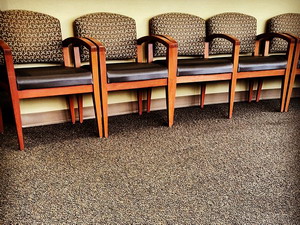 You may not be aware of it, but when you go into a modern doctor’s office, someone is noting how easily you get up from your seated position. This observation is the basic fitness test for average humans. How quickly do you get up? Do you have to slide forward first or can you come straight up? Do you have to help yourself up with your hands? Do you huff and puff or moan and groan getting up? Do you use both legs equally? How good is your balance as you get up? Once you are up is your back fully straight, or is it bent forward for a few steps? How long are your steps? Do you limp or shuffle? Before you even get into the office back area, you have been evaluated on a bunch of different metrics. Arising from the seated position is a basic physiologic and neurological test.
You may not be aware of it, but when you go into a modern doctor’s office, someone is noting how easily you get up from your seated position. This observation is the basic fitness test for average humans. How quickly do you get up? Do you have to slide forward first or can you come straight up? Do you have to help yourself up with your hands? Do you huff and puff or moan and groan getting up? Do you use both legs equally? How good is your balance as you get up? Once you are up is your back fully straight, or is it bent forward for a few steps? How long are your steps? Do you limp or shuffle? Before you even get into the office back area, you have been evaluated on a bunch of different metrics. Arising from the seated position is a basic physiologic and neurological test.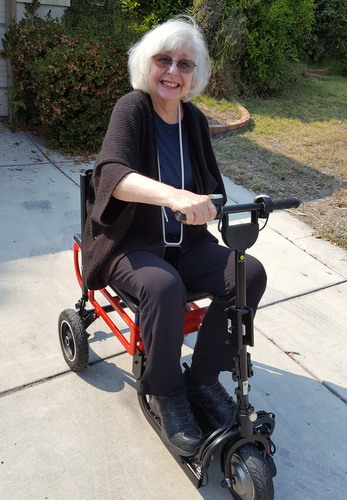 You can have limitations in a lot of different muscles and still function in life. I have had many years now of seeing this in action with the consequences of the stroke Ellen had six years ago. It was a huge pontine stroke that took out her entire left side from the neck down. After many weeks of intensive therapy, she was able to regain about 30% of her previous strength in the left side muscles, but this strength only lasts a few seconds to a minute at best. The most impactful muscle strength loss is in the muscles that enable her to stand up and walk. As a consequence, she is stuck in a wheelchair most of the day. But thank goodness for that 30% when it comes time to get her into the car or into bed. The muscles around the hips are crucial for so much of what we do day-to-day.
You can have limitations in a lot of different muscles and still function in life. I have had many years now of seeing this in action with the consequences of the stroke Ellen had six years ago. It was a huge pontine stroke that took out her entire left side from the neck down. After many weeks of intensive therapy, she was able to regain about 30% of her previous strength in the left side muscles, but this strength only lasts a few seconds to a minute at best. The most impactful muscle strength loss is in the muscles that enable her to stand up and walk. As a consequence, she is stuck in a wheelchair most of the day. But thank goodness for that 30% when it comes time to get her into the car or into bed. The muscles around the hips are crucial for so much of what we do day-to-day.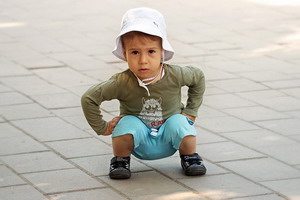 For this reason, it is the hip flexors and extensors that are considered the most important muscles for the average person to keep strong. You could make a case for the neck muscles that keep your head from flopping down onto your chest as being equally important, but that weakness is usually compensated for with a neck brace clinically. Back or hip braces don’t help us get up from a seated position. So what is the most important exercise for seniors? It is the squat. Good strength in our squat muscles enables us to sit down slowly enough to not fall backward and arise gracefully enough to be ready to walk forward. The same muscles that enable us to do a squat, are essential to our walking. Not only is the ability to get up out of a chair immediately important so we can do what we need to do, but the action of arising and walking is essential for proper bowel function and brain function. A movement like walking is the most powerful tool we have to fight brain degeneration. Using the big muscles of the legs actually builds new brain cells.
For this reason, it is the hip flexors and extensors that are considered the most important muscles for the average person to keep strong. You could make a case for the neck muscles that keep your head from flopping down onto your chest as being equally important, but that weakness is usually compensated for with a neck brace clinically. Back or hip braces don’t help us get up from a seated position. So what is the most important exercise for seniors? It is the squat. Good strength in our squat muscles enables us to sit down slowly enough to not fall backward and arise gracefully enough to be ready to walk forward. The same muscles that enable us to do a squat, are essential to our walking. Not only is the ability to get up out of a chair immediately important so we can do what we need to do, but the action of arising and walking is essential for proper bowel function and brain function. A movement like walking is the most powerful tool we have to fight brain degeneration. Using the big muscles of the legs actually builds new brain cells.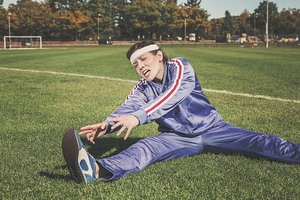 A properly done squat exercises not only the big hip muscles but also the core stabilizer muscles of the spine as well as the abdominal muscles. Additionally, all the muscles around the knees and ankles get a workout as well. I first started doing squats around my 55th birthday when I discovered that picking things up off the floor seemed like a big chore. The floor seemed so far away. I had always had very tight hamstrings and calf muscles, so squatting was something I always avoided. My legs just refused to go there. I always bent forward at the waist to pick things up. Yes, I know, this is not a proper lifting technique. But with such tight calves, I saw no way around it.
A properly done squat exercises not only the big hip muscles but also the core stabilizer muscles of the spine as well as the abdominal muscles. Additionally, all the muscles around the knees and ankles get a workout as well. I first started doing squats around my 55th birthday when I discovered that picking things up off the floor seemed like a big chore. The floor seemed so far away. I had always had very tight hamstrings and calf muscles, so squatting was something I always avoided. My legs just refused to go there. I always bent forward at the waist to pick things up. Yes, I know, this is not a proper lifting technique. But with such tight calves, I saw no way around it.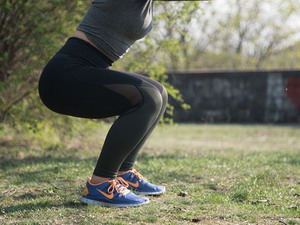 Here is a bit of information to help save your knees when doing squats. Many people start out doing squats by bending forward. This forces your knees to come way forward from your feet. This is a very stressful position for your knees. You do not want your knees more than a few inches forward of the end of your toes. That means you keep your back fairly straight and upright, not bent forward. Using your outstretched hands as a counterbalance to your hips helps you do this. This becomes the secret to a good squat if your ankles do not bend deeply like mine fail to do. Without my arms forward, I fall back on my butt. Little kids, and in cultures where squatting is the natural way to sit, have very flexible ankles that support deep squats easily.
Here is a bit of information to help save your knees when doing squats. Many people start out doing squats by bending forward. This forces your knees to come way forward from your feet. This is a very stressful position for your knees. You do not want your knees more than a few inches forward of the end of your toes. That means you keep your back fairly straight and upright, not bent forward. Using your outstretched hands as a counterbalance to your hips helps you do this. This becomes the secret to a good squat if your ankles do not bend deeply like mine fail to do. Without my arms forward, I fall back on my butt. Little kids, and in cultures where squatting is the natural way to sit, have very flexible ankles that support deep squats easily.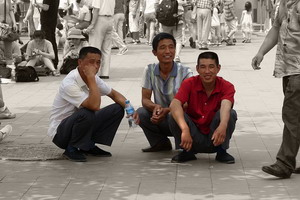 It is interesting to note that in cultures where squatting is the natural sitting position, there is no reported incidence of back pain like we get in this culture. Sitting in chairs has weakened our abdominal and spinal stabilizer muscles so much that simple stress situations allow the back to destabilize and cause great pain. We also never stretch out the hamstring or glut muscles fully when we sit, which allows the low back to roll forward jamming the spinal joints.
It is interesting to note that in cultures where squatting is the natural sitting position, there is no reported incidence of back pain like we get in this culture. Sitting in chairs has weakened our abdominal and spinal stabilizer muscles so much that simple stress situations allow the back to destabilize and cause great pain. We also never stretch out the hamstring or glut muscles fully when we sit, which allows the low back to roll forward jamming the spinal joints.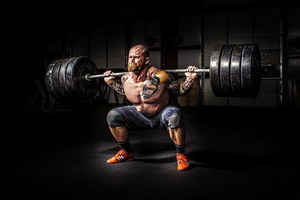 My personal routine includes doing 20 squats every morning. Twice a week (Wednesday and Saturday), I do the squats super slow – 10 seconds going down and 10 seconds coming back up until I reach muscle exhaustion (meaning I can’t do anymore). This keeps my muscles building. When we do any exercise daily with the same number of reps or the same weight, the muscle actually gets steadily weaker as it adapts to the exercise. Every so often you have to push it to its limit to get it to stay strong. Doing nothing guarantees degeneration. Regular movement exercise slows down degeneration and only doing the hard stuff builds strength. There is no such thing as staying the same with the human body. It is either sliding downhill or you are pushing it uphill. There are no plateaus.
My personal routine includes doing 20 squats every morning. Twice a week (Wednesday and Saturday), I do the squats super slow – 10 seconds going down and 10 seconds coming back up until I reach muscle exhaustion (meaning I can’t do anymore). This keeps my muscles building. When we do any exercise daily with the same number of reps or the same weight, the muscle actually gets steadily weaker as it adapts to the exercise. Every so often you have to push it to its limit to get it to stay strong. Doing nothing guarantees degeneration. Regular movement exercise slows down degeneration and only doing the hard stuff builds strength. There is no such thing as staying the same with the human body. It is either sliding downhill or you are pushing it uphill. There are no plateaus. As I said earlier, there are hundreds of possible exercises you can do to stay functional as you age. Pick activities that you like to do. That way you will do them. If you like to dance, then dance. If golf is your thing, then do it. Right now I see lots of people taking up walking. Moving out there in the fresh air is great. If your joints are already painful, then you can do isometric exercises so the joints don’t have to move, but the muscles still get a great workout. Find things to do that will wake up your muscles. Use them regularly. It not only keeps you mobile and functional but keeps your brain functioning as well. Occasionally do some hard stuff. It does not take a lot, just some. Last
As I said earlier, there are hundreds of possible exercises you can do to stay functional as you age. Pick activities that you like to do. That way you will do them. If you like to dance, then dance. If golf is your thing, then do it. Right now I see lots of people taking up walking. Moving out there in the fresh air is great. If your joints are already painful, then you can do isometric exercises so the joints don’t have to move, but the muscles still get a great workout. Find things to do that will wake up your muscles. Use them regularly. It not only keeps you mobile and functional but keeps your brain functioning as well. Occasionally do some hard stuff. It does not take a lot, just some. Last 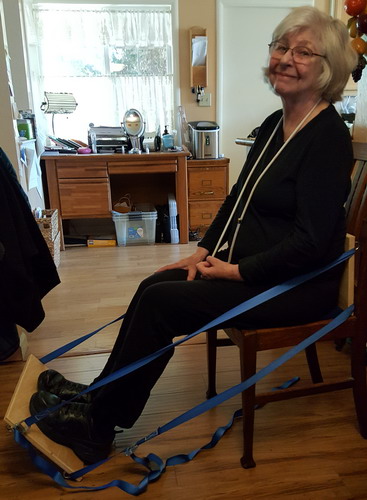 week I showed you a device I built for Ellen to strengthen the osteoporosis in her hips. It only takes about 30 seconds twice a week to signal her hip bones to build more bone strength. So, don’t skip the hard stuff.
week I showed you a device I built for Ellen to strengthen the osteoporosis in her hips. It only takes about 30 seconds twice a week to signal her hip bones to build more bone strength. So, don’t skip the hard stuff.